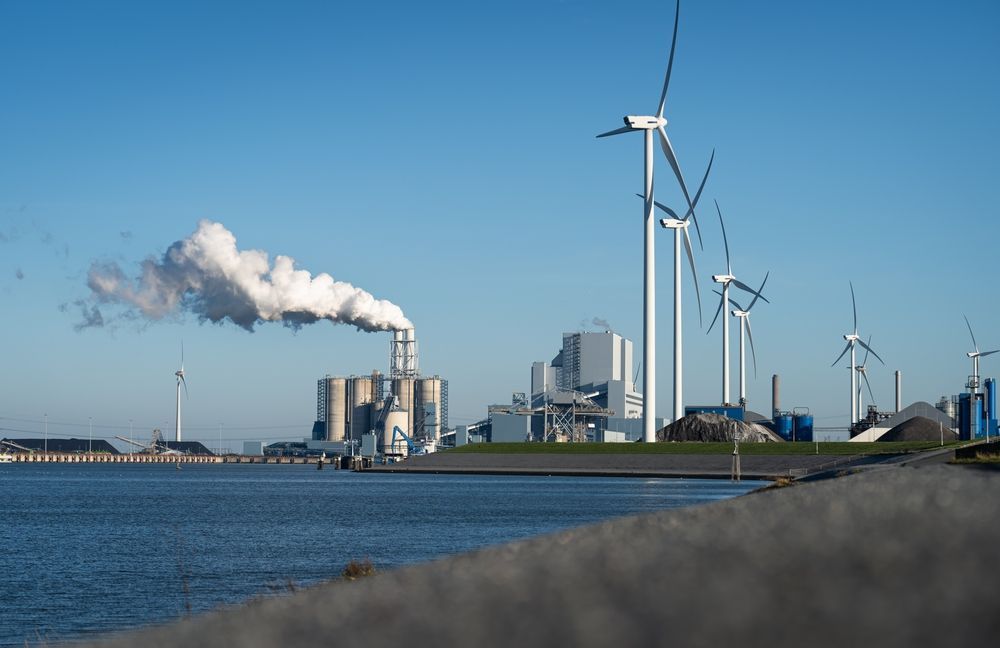Tips for Creating a More Sustainable Manufacturing Business
Written by: Vertec BioSolvents

In the past, many people associated the manufacturing industry with pollution, toxic waste, and harm to the environment. That reputation was built on some unfortunate truths, including the fact that manufacturing facilities consume massive amounts of energy and use hazardous materials to produce essential items.
Modern manufacturing businesses are working hard to remedy those issues and become as green as possible while still serving the public's needs. In this post, we explain the importance of sustainability for manufacturers and what you can do to reduce your ecological footprint.
What Is Sustainable Manufacturing?
Also referred to as green or eco-friendly manufacturing, sustainable manufacturing is an important movement in the industrial sector. The Environmental Protection Agency (EPA) describes it as using eco-friendly practices and conserving resources and energy when manufacturing products. The primary goals of this type of manufacturing include:
- Limiting pollution and emissions
- Preventing harm to the local environment
- Reducing waste energy and water consumption
- Improving safety for workers and nearby communities
Manufacturers use a variety of strategies to meet these objectives and improve their sustainability.
Why Does Sustainable Manufacturing Matter?
As the effects of climate change have become more severe, many organizations have acknowledged the need to create a cleaner, healthier world. This is especially true for the manufacturing sector, which the Congressional Budget Office estimates was responsible for 12% of greenhouse gas emissions in the United States in 2021.
Recognizing that the industry has such a significant effect on the environment, companies have begun adopting sustainable manufacturing practices in an attempt to reduce their carbon footprints. In addition to meeting the moral obligation for environmental protection, sustainability also offers several other benefits, including:
- Greater customer trust and confidence
- Fewer chances of negative media coverage due to environmental disasters, such as oil spills or toxic leaks
- Cost-savings due to improved energy, water, and raw material efficiency
- Lower likelihood of violating governmental and industrial regulations, reducing the risk of audits and penalties
These advantages and the increasingly dire need to mitigate the impacts of climate change have proven very compelling for leaders in the manufacturing sector. In a 2022 survey by the Manufacturing Leadership Council,
90% of respondents said that manufacturers have a responsibility to become more sustainable.
How to Become More Sustainable
The path to sustainability isn't the same for every organization, and the way you adjust your practices will ultimately depend on the function, size, and structure of your facility. However, there are some general principles that all manufacturers can follow to move closer to becoming green.
Eliminate Fossil Fuels
As much as they might try to curb their energy consumption, manufacturers will always need a significant amount of energy. That doesn't mean they have to continue depleting natural resources and fossil fuels.
Switching to renewable energy sources, including solar, wind, and biomass, can help limit the impact of the industry's massive energy needs. A manufacturing facility that runs fully or partially on renewable energy has a much smaller carbon footprint than one that relies on fossil fuels.

Decrease Pollution
Manufacturing plants can become more sustainable by lowering the amount of pollution they produce. These pollutants can affect the air, water, and soil, potentially damaging ecosystems, animal life, and human health.
These are a few of the steps your facility can take to limit pollution:
- Using pollution prevention practices, including implementing technology solutions that minimize pollutants
- Implementing pollution control measures, such as wastewater treatment systems
- Establishing pollution monitoring programs to analyze the company's environmental impact and look for opportunities to improve
Manufacturers can also reduce pollution by choosing eco-friendly materials, such as
organic solvents. Solvents are critical to cleaning and production processes for many organizations, but they're often toxic. Businesses in many
industries use biosolvents as a substitute for petroleum-based solvents, which pose a serious threat to the environment.
Recycle
Manufacturing facilities produce enormous amounts of waste, and recycling is key to addressing this problem. One basic step is to increase the amount of used materials that you incorporate into your production processes. For example, you can collect products at the ends of their lifecycles and reuse them in new products rather than destroy or dispose of them.
Closed-loop manufacturing, also known as circular economy, is another important part of this effort. With this approach, manufacturers intentionally design products and processes so that they can recycle or reuse the materials involved.
Reduce Waste

Recycling can help limit manufacturing waste, but it's also vital to address the problem at its root. That might require conducting a waste audit to determine how much waste you produce and where you can make changes.
Manufacturers committed to waste reduction use lean manufacturing principles, reducing their inventory and optimizing production processes. Technology may also offer solutions, as sensors and monitoring systems can detect areas with excessive waste so you can modify or repair them.
Time-Saving Practices
At first glance, time wouldn't seem to have much of a connection to sustainability. In reality, a lack of efficiency can substantially worsen your company's environmental impact. Working quickly not only makes you more productive but also helps reduce ozone depletion and other negative effects.
To streamline your manufacturing processes, develop and refine your standard operating procedures to create consistency. Create checklists and guides so all your employees are on the same page. Additionally, work with suppliers and partners, including
solvent suppliers, to optimize delivery times so delays don't interfere with your scheduling.
How is VertecBio Helping Companies Become Sustainable?
VertecBio has an important part to play in making the manufacturing industry more eco-friendly. Our green solvents use biodegradable materials that are safer for the environment and the people who come into contact with them. We work with manufacturers to find the right solutions to replace traditional solvents that are crucial to their processes.
To learn more about our bio-based solvents,
contact our team of experts. We'd love to discuss your vision of sustainability and how our solvents can help make it a reality.


